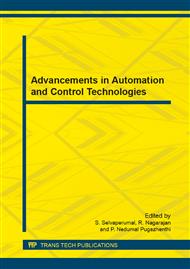p.537
p.543
p.549
p.556
p.560
p.565
p.571
p.576
p.582
Filtering Dirty Words in Online Social Network by Applying Automated Filtering System
Abstract:
The aim of the project work is automatically to filter the dirty words from other users without displaying to the profile owner. In Online Social Network may have possibilities of posting some dirty messages so it need to filter without displaying to owner. It has achieved by using Rule based Filtering System. The Rule Based Filtering System allows users customize to filter the noisy or dirty words by applying some filtering Criteria. It exploits Machine Learning (ML). Machine Learning is a text categorization techniques to specify some categories for assign the short text dirty words based on their content. The content-based filtering on messages posted on user space has specified the additional challenges to be given the short length of these messages. Online social networks not only make it easier for users to share their opinions with each other, but also serve as a platform for developing filter algorithms.
Info:
Periodical:
Pages:
560-564
Citation:
Online since:
June 2014
Authors:
Price:
Сopyright:
© 2014 Trans Tech Publications Ltd. All Rights Reserved
Share:
Citation:


